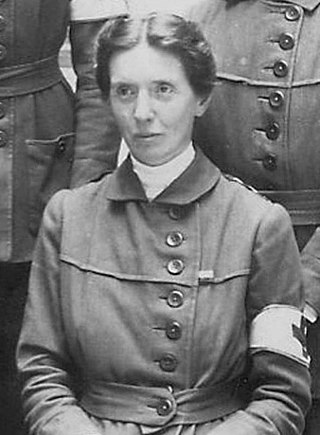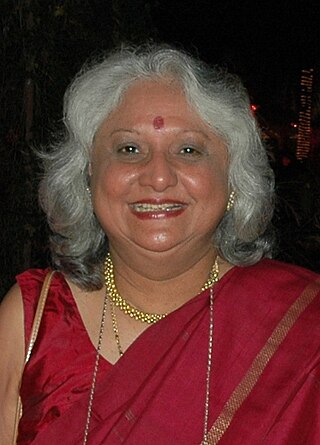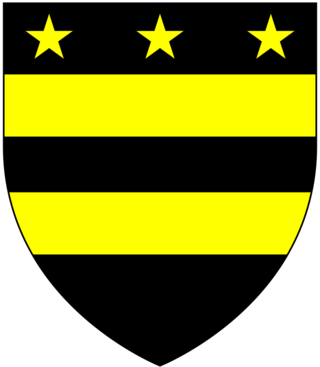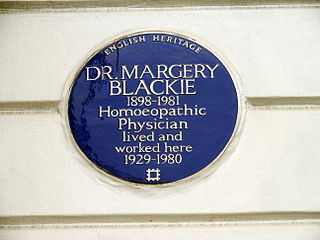Related Research Articles

The University of Cape Coast is a public collegiate university located in the historic town of Cape Coast. The campus has a rare seafront and sits on a hill overlooking the Atlantic Ocean. It operates on two campuses: the Southern Campus and the Northern Campus. Two of the most important historical sites in Ghana, Elmina and Cape Coast Castle, are a few kilometres away from its campus.
The London School of Medicine for Women (LSMW) established in 1874 was the first medical school in Britain to train women as doctors. The patrons, vice-presidents, and members of the committee that supported and helped found the London School of Medicine for Women wanted to provide educated women with the necessary facilities for learning and practicing midwifery and other branches of medicine while also promoting their future employment in the fields of midwifery and other fields of treatment for women and children.

Bertrand Edward Dawson, 1st Viscount Dawson of Penn, was a physician to the British Royal Family and President of the Royal College of Physicians from 1931 to 1937. He is known for his responsibility in the death of George V, who under his care was surreptitiously injected with a fatal dose of cocaine and morphine to hasten his death, without obtaining any prior patient consent and in contravention of the law at the time, possibly constituting or amounting to murder.

Flora Murray was a Scottish medical pioneer, and a member of the Women's Social and Political Union suffragettes. From 1914 to the end of her life, she lived with her partner and fellow doctor Louisa Garrett Anderson.

Kathleen Florence Lynn was an Irish Sinn Féin politician, activist and medical doctor.
George Evans, 1st Baron Carbery PC (Ire) was an Anglo-Irish politician and peer. A member of a County Limerick family of Whigs, he entered the Irish House of Commons and was created a peer in 1715 as a reward for his father's support of the Hanoverian succession, after his father declined the offer. At the same time, he was returned to the British House of Commons for Westbury. He contested control of the borough with the Tories led by the Earl of Abingdon until 1727, when he stood down.

Dame Helen Charlotte Isabella Gwynne-Vaughan, was a prominent English botanist and mycologist. During the First World War, she served in the Women's Army Auxiliary Corps and then as Commandant of the Women's Royal Air Force (WRAF) from 1918 to 1919. During the Second World War, from 1939 to 1941, she served as Chief Controller of the Auxiliary Territorial Service (ATS).

Agnes McLaren FRCPI was a respected Scottish doctor who was one of the first to give medical assistance to women in India who, because of custom, were unable to access medical help from male doctors. Agnes was active in social justice causes including protests against the white slave trade. She signed the 1866 women's suffrage petition and was secretary of the Edinburgh National Society for Women's Suffrage alongside her stepmother, Priscilla Bright McLaren. In 1873 she travelled with Priscilla and Jane Taylour to give suffrage lectures in Orkney and Shetland. Her father had supported the campaign of first women who sought to study medicine at University of Edinburgh and Agnes became friends with Sophia Jex-Blake, one of the Edinburgh Seven. Her father did not however, support Agnes' own ambitions in this area. And as she could not graduate in medicine in Scotland, she went to study in France and later, in order to be permitted to practice at home, became a member of the Royal College of Dublin.

Ketayun Ardeshir Dinshaw FRCR was a prominent personality in the field of Indian medicine and played a significant role in the evolution of modern cancer care in India, and the development of effective radiation therapy. In 2001, the President of India conferred on her the Padma Shri. A prominent news channel has described her as: “The ultimate hope and the last possible post to cling onto for the cancer-struck in India”. Over a thirty-year period, Dinshaw revolutionised cancer medicine in India, refining multi-modal treatments as the exception rather than the rule.
Peter Ralfe Harrington Evans-Freke, 11th Baron Carbery was the 11th Baron Carbery from 1970 until his death at the age of 92 in 2012.

Sir Ralph Freke, 1st Baronet of West Bilney, Norfolk, and Rathbarry, County Cork, was a baronet in the Baronetage of Great Britain and a Member of Parliament in the Irish House of Commons.

Margery Grace Blackie CVO MD, FFHom was a British Doctor of Medicine who was appointed as the first woman royal physician to Queen Elizabeth II.

Mary Rushton Barkas was a psychiatrist, physician and author from New Zealand. She worked at the Bethlem Royal Hospital, where she was the first female house physician, and the Maudsley Hospital in London, United Kingdom.
The Victorian Medical Women's Society (VMWS) is the longest-running association of women medical practitioners and medical students. It was established in Melbourne, Australia in 1895/1896 and is one of the oldest active medical organisations in the world. The aim of the society was to set a benchmark in women's health around Victoria, and to advance the professional development of medical women, through education, research, and the improvement of professional opportunities. The state-run society became affiliated with the national body, Australian Federation of Medical Women, and thereby the Medical Women's International Association.
Hannah Mary Helen Sexton, known as Helen Sexton, was an Australian surgeon. After retiring from a surgical career in Melbourne, she opened a field hospital in France during World War I.
Mary Ellice Thorn Hearn M.D. F.R.C.P.I. was a gynaecologist and first female fellow of the Royal College of Physicians of Ireland.
Iris Ashley Cummins was the first female engineer to graduate University College Cork (UCC) and was also an international hockey player.

Sr. Dr. Maura Lynch was an Irish doctor, a nun, and proponent of women's health.

Michael John Hargrave was a British general practitioner in Wootton Bassett, Wiltshire, who in 1945 assisted British Army occupation forces at the recently-liberated Bergen-Belsen concentration camp when he volunteered as a medical student from Westminster Hospital at the age of 21.
Carmen C. Deseda is a Puerto Rican pediatrician. She is a medical officer and commander in the United States Public Health Service Commissioned Corps. Deseda served two terms as the state epidemiologist in the Puerto Rico Department of Health, first from 1994 to 2001, and later from January 2017 to March 2020.
References
- 1 2 3 "The Dictionary of Irish Biography".
- 1 2 3 4 5 6 "The peerage". The peerage. Retrieved 10 March 2018.
- ↑ "The Frekes of Castle Freke". Bandon-genealogy.com. Retrieved 11 March 2018.